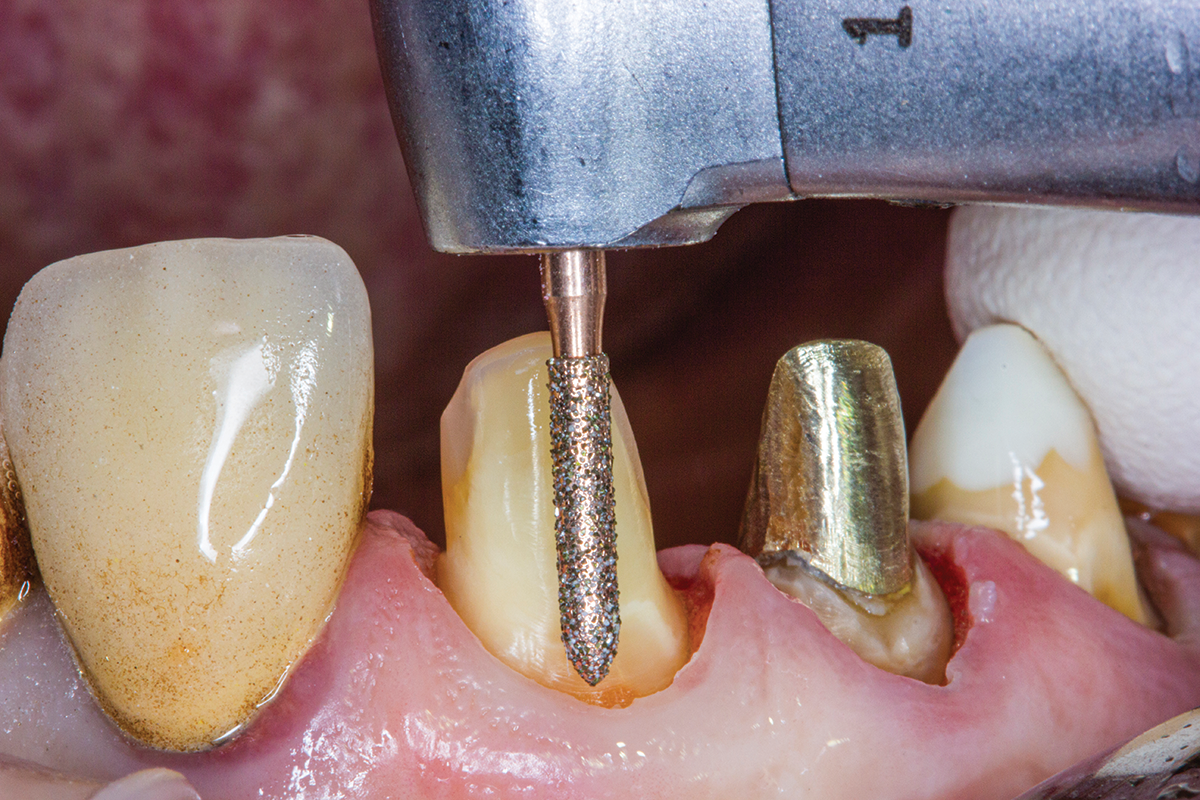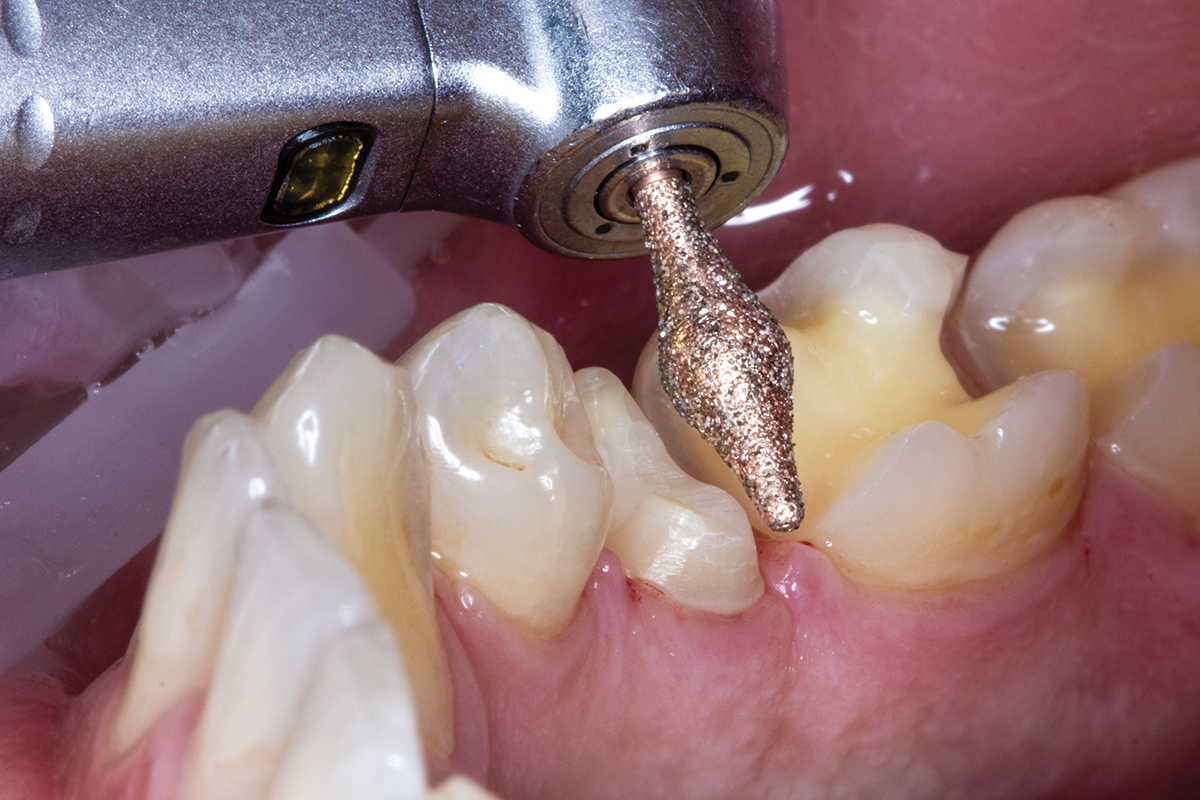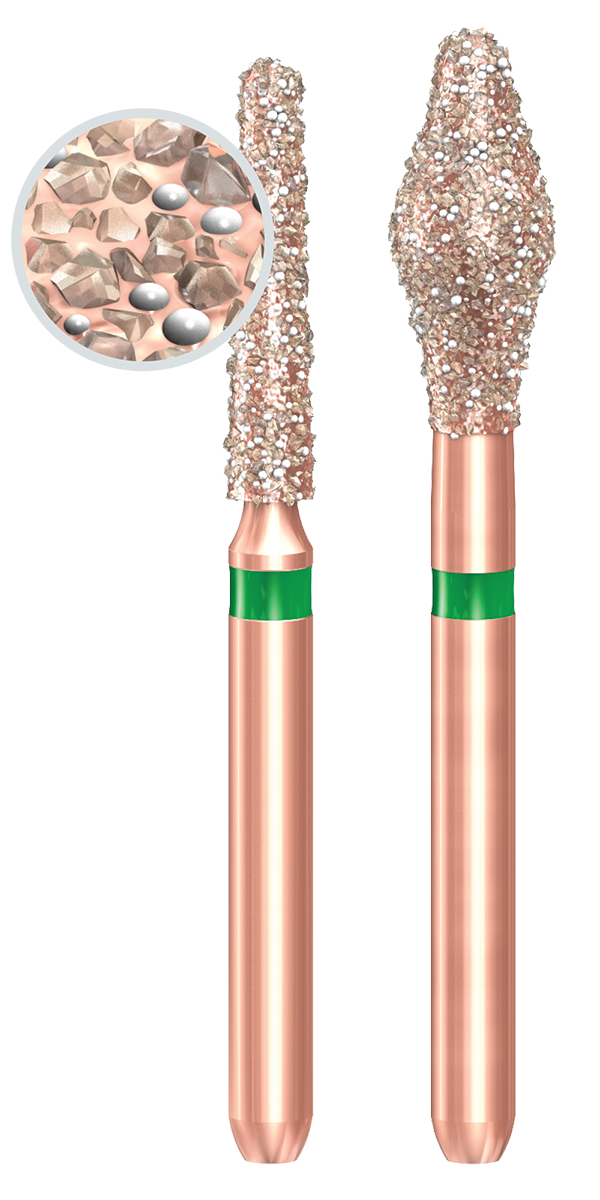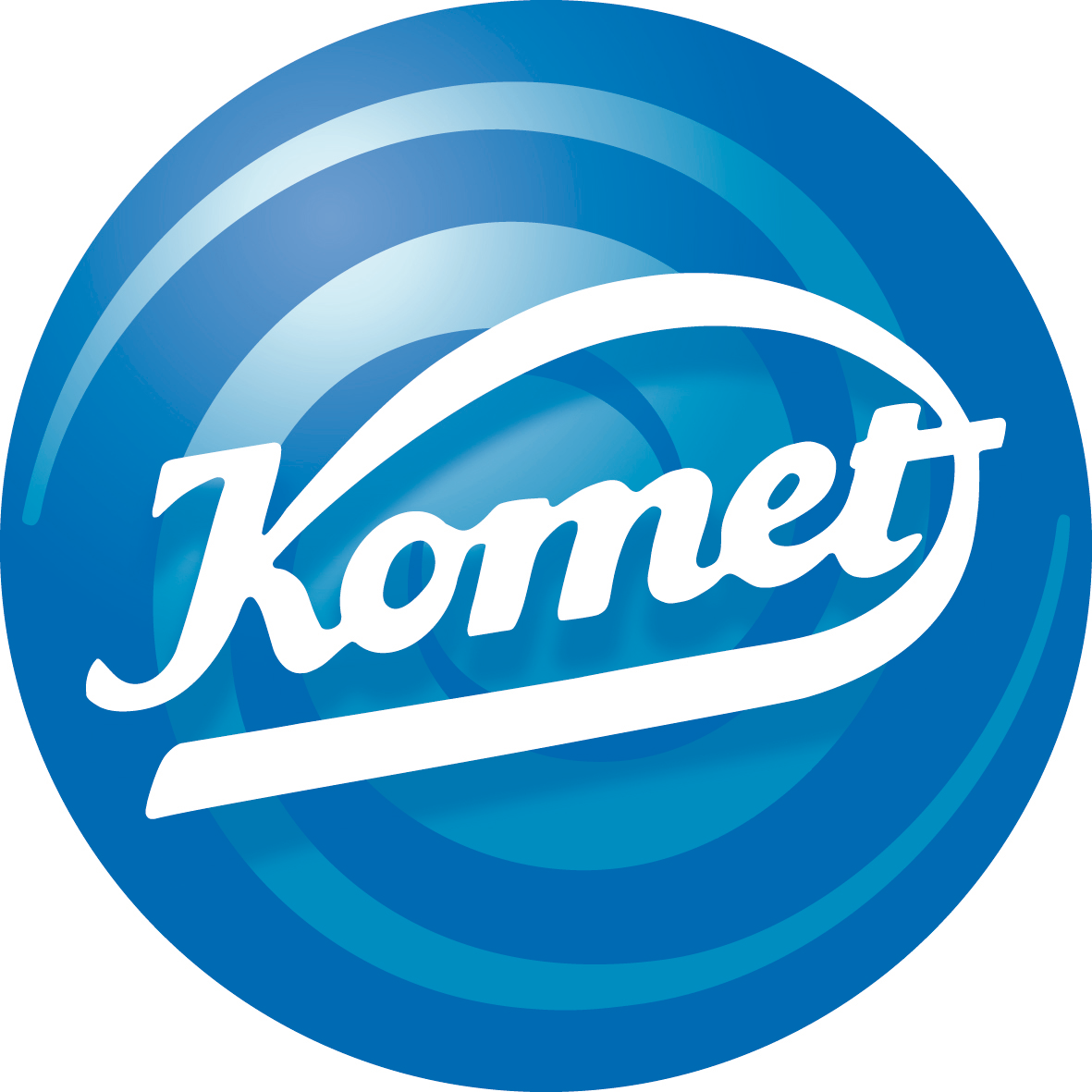Komet’s DIAO Is a True Breakthrough In Dental Bur Design
[SPONSORED] John Flucke, DDS, shares what impressed him so much during his test drive with Komet's new DIAO diamond burs.
One of the greatest advancements in clinical dentistry was the invention of the high-speed handpiece. Prior to the air rotor being applied to the concept of removing tooth structure, the most common way to perform that task was a belt-driven system.
Many of you have probably seen older handpieces that are powered by a series of belts and pulleys that were used clinically until the early 1960s in the US They didn’t work well for the task because they provided rotational speeds similar to our current slow-speed handpieces.
I’ve personally been on the receiving end of quite a bit of dental treatment, and I frequently tell patients that I look upon those experiences as opportunities to understand what it’s like to be on the receiving end of what we do as a profession. It gives me a chance to experience many of our procedures so I can learn from them and try improve them for my patients.
I’m telling you this because I know what those belt-driven handpieces felt like. My family dentist as I grew up was a great man. He was friendly, low key, and encouraged me to go into dentistry. He was also incredibly old school. I grew up visiting an office where preparations were made with belt-driven handpieces. The vibration felt like somebody was making a margarita in my skull. It wasn’t pleasant. The high-speed handpiece helped to do away with that vibration, and it was revolutionary.
While we have seen some incredible advancements in rotary technology, what we haven’t seen are significant advancements in the cutting instruments themselves. The dental burs that we use today remain similar to those from decades ago. That is about to change dramatically. I recently had the opportunity to test drive a new bur design from Komet, and it is impressive.
I’ve seen a burs manufacturing factory, and if you ever get the opportunity to visit one, I highly recommend going. The precision incorporated into such a tiny component is mind-blowing. About halfway through the tour I started to feel guilty. I had always just picked up a bur, used it, and then tossed it into the sharps. I had never sat down and considered how much precision goes into making them nor the dedication of the craftsmen who create them day after day.
One of the things that I was fascinated to see on that tour was the creation of diamond burs. The science was complicated, but suffice it to say that diamond dust is separated into particles of different sizes and then those similar in size are attached to the bur. The part I was most amazed by was the science that allows for those particles to be deposited and attached to the metal of the bur. Because the dust is sorted into similar sizes, the process allows for the creation of burs with certain levels of grit. The coarser the grit, the faster and more aggressively it cuts. Fine grit, however, often is used for polishing rather than removal.
Diamond burs work well and do not lose their cutting efficiency as quickly as carbide burs. Many doctors–including me–use diamond burs almost exclusively. Carbide burs can be sterilized, but the process of autoclaving greatly reduces their sharpness, which results in less office efficiency.
The only real drawback to diamond burs is their cost. Even though the diamond grit used is from industrial diamonds, there is still a greater expense in obtaining them and in the manufacture of the burs.
Diamond burs have undergone very little change over the years, but there are things about them that could be improved. We now have access to an incredible advancement in the field with the release of DIAO from Komet.
As I stated above, the manufacture of diamond burs involves the deposition of diamond grit onto the shank of the bur. The grit, while specifically sorted to be of similar sizes, looks like gravel when examined under an electron microscope. Therefore, the particles are of similar sizes but by no means are they uniform in appearance. Because each particle has a unique shape, they are nonuniformly deposited onto the bur shank. The result is that some particles have sharp edges pointing outward toward the tooth while some have flat edges oriented in that direction. Due to this nonuniform deposition, the best cutting edges are not aligned to contact the tooth surface. This translates to a less efficient cutting process.
DIAO Diamond Bur from Komet cutting a prep.

To overcome this challenge, traditional diamond burs have the particles packed as closely together as possible. While this results in a high diamond-to-surface ratio, those particles align themselves for the best fit in relation to each other rather than to achieve optimal cutting efficiency.
The smart folks at Komet have come up with an amazing idea to increase efficiency. In between the diamond particles are tiny ceramic spheres the company calls “pearls.” These pearls help create spacing between the diamonds and orient them to increase the number of cutting edges situated to provide enhanced structure removal.
With traditional burs that have tightly packed diamond particles, the random deposition of the particles creates tiny grooves where a slurry of enamel and dentin particles can build up. Once those channels fill with debris, the cutting efficiency of the bur drops significantly as debris buildup decreases contact between sharp diamond surfaces and tooth structure.
DIAO Diamond Burs from Komet are available in multiple shapes.

The ceramic pearls in the DIAO diamond matrix create microscopically larger channels between the diamond particles that allow debris to be flushed out by the water spray from the handpiece. Not only are there more cutting surfaces doing the work, but those surfaces are also kept free of debris so they can continue to work.
DIAO provides a smooth cut and increased tactile sensation for the operator. The pearls also create a longer life for the bur because there is less sludge buildup during use. Komet also made these burs easily identifiable with a rose gold coating on the shank.
DIAO has performed well in my hands. I have been very impressed with the speed of the cut and the control I feel when I am using the burs. I work more efficiently, which means my patients spend less time in my office and more time doing what they want to do. The product has proven itself in my hands and I am confident that you will be as happy as I am with these incredible burs!

